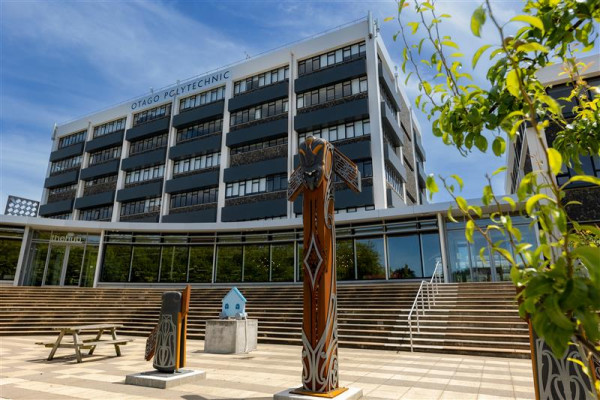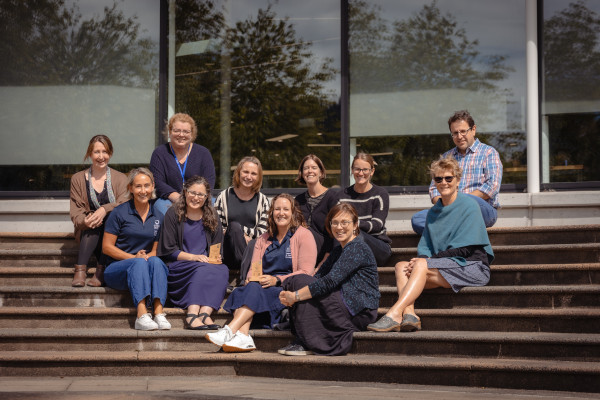- Tūhono home Hoki ki Tūhono
-
- Staff Directory
- Chief Executive Office Auckland International Office Corporate Services Finance Campus Services Functions and Catering Information Systems and Support Marketing, Communications and Engagement Learner Journey Academic Registry International Learner Services Te Punaka Ōwheo
- Learner Experience Academic Excellence Central Campus College of Community Development and Personal Wellbeing College of Engineering, Construction and Living Sciences College of Health College of Work Based Learning Open Education Resource/OERu Research and Postgraduate Studies Te Maru Pumanawa | College of Creative Practice and Enterprise
- Māori Development and Kaitohutohu Office People, Culture & Safety People and Culture Polykids Te Ama Ako | Learning and Teaching Development Wellbeing and Safety Auckland Staff Directory Executive Office Academic Corporate Services Marketing and Business Development Human Resources Campus Quality and Programme Development
-
 Our people make a better world
Our people make a better world
We build the capabilities of individuals, organisations and communities and help them to realise their potential.
Staff Directory
-
- Tools
- Academic Integrity Declaration Form AIC Applications Dashboard Approved Programmes Approved Programme Fees Centralised Assessement Repository Chemwatch CMS - Tūhono & StudentHub updates Course Evaluation and Surveys CRM Applications CRM customer service hub Delegations policy/process Disability and Neurodiversity Dynamics 365 (CRM) EBS Ontrack EBS Report Email Security Personal Portal Employment Matters / Solarworkplace eTaxi eTV
- Financial Variance Reporting Hidden Disabilities Sunflower programme FCM travel intranet InPlace International entry requirements Knowledgebase articles Learner Capability Learner Support Dashboards Linkedin Learning Log a job with Marketing Login as an applicant Microsoft 365 Moderation App Moodle OP Docs OP Docs - Publishing OP Image Libraries Performance Excellence Portal Product Evaluation Panel
- Policy Library Privacy Programme and Course Design and Development Qualtrics XM RDS Remote Access Support Portal Research Database Robertson Library Staff FAQs about Graduation Status of Programmes Student Hub (Kāpehu demonstration view) Study Abroad info for learners Te Whare (Te Pūkenga intranet) Tūhauora I Wellbeing resources Uniprint Vault Webexpenses Auckland Tools
-
 Vault
Had an accident or near miss?
Log it here
Vault
Had an accident or near miss?
Log it here
-
- Communities
- Community AI Steering Committee Ally Network EBS Community of Interest EdTech Champions Health & Wellbeing Research Internal Evaluation Neurodiversity Professional Team Professoriate Proud@OP Student Support Website Advisory Group Web Champions Working under the Rainbow Project Learner Capability Trade Training Centre
- Committee Academic Committee Animals@OP Diversity and Equity Doctor of Professional Practice Committee Kaunihera Whakahaere - Leadership Council Internal Evaluation Learning & Teaching Leadership Team Library Committee Mental Health and Wellbeing Advisory Group Otago Polytechnic Board of Directors Pastoral Care Code Committee Programme Approvals Committee Research and Postgraduate Committee Research Ethics Committee Staff Subcommittee
- Think Tanks Mātauraka Our learners achieve educational success Pūtea Our financial success Tākata Our people, our team, our community Tiriti Our active commitment as a Treaty partner Tūroa Our commitment to be a sustainable and responsive organisation
-
 Create a community
Create a community
Do you have a community, committee or project that you'd like represented here?
Communities
-
- About OP
- Keep up to date All news All events All notices All blogs Share your info Create a news article Create an event Create a notice Create a blog
- Community and Partnerships Alumni and friends Education Foundation Operational information Academic calendar 2025 Academic calendar 2026 Current vacancies Dunedin campus map Our policies Te Whare (Te Pūkenga intranet) Topical FAQs
- Who we are Commemorative sites Māori Strategic Framework Our history Our strategic priorities Pasifika Strategic Framework (2025-2030) Vision and Values Working for us OP job opportunities Wellbeing Calendar Working at OP
-
New Zealand: 0800 762 786
contact us
International: +64 3 477 3014
Bridging the_Gap: Using design thinking to move FMCG NPD from incremental to radical innovation
Author: Jonathan Willows
Bridging the_Gap: Using design thinking to move FMCG NPD from incremental to radical innovation
Jonathan Willows
29 May 2020
Willows, J. (2020). Bridging the_Gap: Using design thinking to move FMCG NPD from incremental to radical innovation. (A partially redacted thesis submitted in partial fulfilment for the Master of Design Enterprise at Otago Polytechnic, Dunedin, New Zealand). https://doi.org/10.34074/thes.5603
Abstract
This paper explores three distinct layers of impact within the seafood industry: a transformation in professional practice, a resolved product and implementation plan and a new design-led FMCG framework that can be applied across the FMCG sector.
Within these three layers of impact are five key recommendations:
- Transformation in professional practice
- Personal and professional reflection and limitations of relying on tacit knowledge alone
- A resolved product and implementation plan
- Rejecting the established methods of new product development
- The value of effective communication across multiple stakeholders of non-linear and iterative design processes
- The social and environmental value of seafood serve-over counters within retail
- New design-led FMCG framework
- Trademarked new development model including its application within FMCG
Through personal and professional reflection, I will explore my intertwined relationships with the environment, personal values and a sense of place within fishing communities. These elements of working, class survival and protecting our planet are what drive my conscious and unconscious bias within my design practice. In addition, it is about what my career has meant, not only to me but the wider community in which I operate. Within this, and more critically, are the limitations of relying on tacit knowledge and other traditional development models from FMCG industries, such as stage-gate models. An identified area of weakness in the existing development model is that it is predominantly linear; therefore, a rejection of these established methods is critical for the evolution of novel products and services.
This notion of rejecting the established methods of new product development will be explored through the application of design thinking, and more especially Human-Centred Design (HCD). Further explored will be how design thinking and HCD can be used to facilitate and explore users’ needs and pain points, thereby creating desirability and integrating design thinking into new products. This incorporation of design thinking over traditional methods results in a new development model, one that is able to communicate the value of non-linear and iterative design processes across multiple stakeholders.
This development and application of the new model is explained through multiple sections of this document. The application will be applied to fisheries resource management and value creation within seafood, exploring consumer health, environmental considerations and social connectivity.
The rationale for this approach in relation to focusing on seafood and fisheries is the declining human connection associated with the purchasing of seafood, on a global scale. Seafood counters are facing extinction, unless a radical approach is adopted. I wish to ensure seafood counters become more relevant to providing solutions to shoppers’ everyday problems, whilst understanding and highlighting the notion of value beyond purely financial metrics.
The switching of seafood sales from traditional serve-over counters to single use packaged seafood are noted, and whilst advancements in packaging is explored from the viewpoint of environmental considerations, such as replacing unrecyclable foam trays destined for landfill with packaging made from recycled material, suitable to be recycled, this is still not addressing the root cause of the problem.
Whilst using recyclable packaging is significantly kinder to the planet from a reduced carbon emissions viewpoint, it is not the long-term solution. We must stop the problem in the first place, adopting a new model of environmentally sound reusable packaging with HCD at its core. A paradigm shift is needed through the awareness of the failures and continued destruction of a body of accepted behaviours and patterns embodied in mass packaged fresh foods, and from this destruction a new model emerges.
Keywords: fast moving consumer goods, design, new product development, seafood, design thinking, sustainability
Jonathan Willows' primary supervisor was Tim Lynch.
License
This thesis is available under a Creative Commons licence CC BY-NC-ND 4.0.

